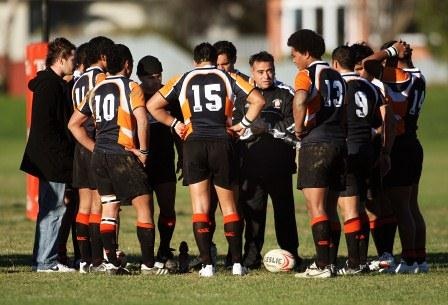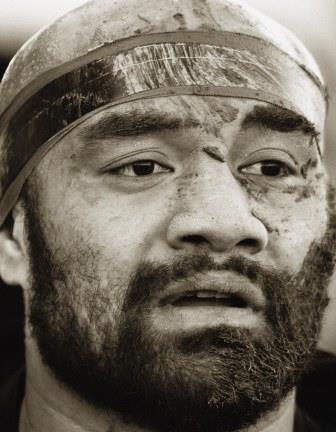- Rugby Toolbox
- Resources & Education
- Learn more
- Articles
- Snook on Coaching
- Learning the Game
- Ruck & Run Drill
- Playing Philosophy – Ruck & Run Coaching Components
- Playing Philosophy – Spread the Forwards
- Playing Philosophy – A forward behind the ruck
- Playing Philosophy – Ruck & Run
- Playing Philosophy – An idea!
- The Breakdown
- Building Positivity [3]
- Building Positivity [2]
- Building Positivity
- Fitness and Game Related Activities
- Getting the Head Working
- Missiles are Dangerous
- Use of Video
- Winger Attacking Outside First-Five
- Player Profiling
- Selection
- Fitness Away from the Team Session
- Playing Philosophy (Pre season Prep)
- Coaching the Coaches
- The Rugby Coordinator and Pre-Season Preparation
- Why Not Use Tap Penalties More Often?
- Why Kick the Ball Down the Middle of the Field?
- Defending the 5 Metre Lineout Drive
- Scoring from the 5 Metre Lineout
- What are the Kicking Team Aiming to Achieve from Halfway Restart
- Should We Practice Scoring Tries?
- Team Culture
- Looking After Your Players
- Coach Survival Tips
- Under 11/13 – Backline Defence
- Under 11/13 – Ruck Defence
- Under 11/13 – Back Attack
- Under 13 – The Counter Attack
- Under 11/13 – The Maul
- Under 11/13 – Lineouts
- Under 11/13 – Decision Making
- Under 11/13 – Support Play
- Under 11/13 – Dive Pass and More
- Under 11/13 – Drop & Grubber Kick /Highball Catch
- Under 11/13 – Front on Tackling
- Under 11/13 – Contact – Getting Up – The Ruck
- Under 11/13 – The Coaching Session
- Under 8/10 – Using Space
- Under 8/10 – Kicking
- Under 8/10 – Contact and Picking Up the Ball
- U8/U10 Draw & Pass and Sidestep
- Under 8/10 – The Tackle
- Under 8/10 – The Coaching Session
- Under 7 – Test Your Coaching – Support Play
- Tap Pass and Swerve U7
- Ball Familiarisation; Passing & Receiving
- Activities for the Non-Contact Tackle
- Under 7 – The Coaching Session
- Coaching Teenagers – After the Ruck
- Coaching Teenagers – The Practice Session
- Coaching Teenagers – Best Practice
- Coaching Kids – Best Practice
- Plays from a Tap Penalty
- Running Plays from a 5 Man Lineout
- Driving Plays from a 5 Man Lineout
- Strike Plays at the End of the Lineout
- Back Strike Plays at the Lineout
- Wide Strike at the Scrum (2)
- Wide Strike at the Scrum
- Midfield Attack at the Scrum
- No 8 Plays at the Scrum (2)
- No 8 Plays at the Scrum
- The Cut Out Pass
- Skills to Penetrate (2)
- Skills to Penetrate
- Movements to Penetrate
- Patterns to Penetrate
- Contact and Continuity
- Keeping the Ball Alive Out Wide
- Pre Season Support Activities
- Checklist
- Understanding the game
- The Playing Philosophy
- The Lineout
- Overview
- Team Profile
- Start Now!
- Backrow
- Nine and Ten
- Rugby-related Fitness Activities
- The Psychological Edge
- Open Field Play
- Key Performance Indicators
- Improving Team Performance
- Backline Attack Concepts
- Tactics at Phase Play
- Playing Philosophy
- The ‘Stop Focus’
- Kick Attack
- Clearing the 22
- Wide Attack at Phase
- Player Focus
- Scrum Preparation
- Lineout Preparation
- Back Attack Preparation
- Sevens Preparation
- Sevens Kick Offs
- Sevens Scrum and Lineout
- Sevens Attack Patterns
- Sevens Defence
- 7's Selection and Game Planning
- Coaching and Leadership
- How the Game Evolves
- Changing Within the Game
- Learning from the Television.
- Using Tap Penalties Wisely
- Defence Drills
- Defence Drills for Tight Five
- Team Defence and TUB’ing
- Establishing Patterns from the Ruck
- Structured Phase Play
- Structuring Phase Play on the Run
- Coaching Roles
- Structuring a Close in Tackling/Defensive Session
- Coaching in Threes
- Attacking Back Play
- Kick Off Chase
- Wrap Around Back Plays
- Lineout Plans
- Looking and Learning
- Motivating Your Players
- Scrum Attack
- Refocusing the Team
- Monitoring the Progress
- Learning the Game
- Playing to the Laws
- Small is OK
- Decisions After the Tackle
- Improving Your Coaching
- Food for Thought
- More Food for Thought
- Passing & Catching
- How Ireland Nearly Beat the All Blacks
- The Progressive Coach
- Try Something New
- Encouraging Excitement
- The Mental Approach
- Where to Start
- Being the Best You Can Be
- Off the Ball Decisions
- Lineouts Difficult to Master
- Decisions on the Run
- Rucking and Rolling
- A Successful Approach
- Gaining Clarity
- Manipulation vs Physicality
- Beating the Drift
- To Ruck or Not to Ruck
- Stopping the Lineout Drive
- Fine Tuning the Planning
- It's a Running Game
- RugbySmart 2015
- Using the Shoulders
- Loosehead Prop / Tighthead Prop
- Position Specific – Hooker
- Position Specific – Lock
- Position Specific – Blindside Flanker
- Position Specific – Openside Flanker
- Position Specific – No 8
- Position Specific – Halfback
- Position Specific – First Five Eighth
- Position Specific – Second Five Eighth
- Position Specific – Centre Three-quarter
- Position Specific – Wing
- Position Specific – Fullback
Learning the Game

Rugby in New Zealand has taken on a considerably different shape over the last few decades with the advent of professionalism and the associated structures such as academies at provincial and school level, and is now churning out a high number of quality rugby athletes.
With such a fast moving pace of life and high expectation of performance from young people it is almost as if the physiological demands have overtaken the game understanding requirements of many players. The athlete has taken over from the ‘rugby player’.
 So how does the coach remedy the situation where kids, and even adults, play the game but don’t fully understand what it is about, what they are trying to achieve and how to go about gaining the insights and decision making skills that will help their game?
So how does the coach remedy the situation where kids, and even adults, play the game but don’t fully understand what it is about, what they are trying to achieve and how to go about gaining the insights and decision making skills that will help their game?
Game Understanding
Obviously the first requirement is gaining a knowledge of the different aspects of the game and creating an understanding of when and where these should be applied, and what the team are hoping to achieve by carrying out the particular plays.
If the lineout is used as an example there are a large number of variations to the theme that can apply in different situations and not only does the decision maker need to know the best option in a certain situation, but everyone needs to know why this option is chosen and what they are hoping to achieve. They will all have a role to play.
On the team’s own throw would there be a different option in a defensive lineout 5 metres from the try line than there would be 5 metres from the try line on attack. How many options could there be in these two situations? Do they have to be ‘all man’ lineouts?
When and where is a good time and place to use a short lineout? What are you trying to achieve? How does the continuity take shape from this?
No matter what aspect of play you choose the players should be directed with a number of ‘what – why – how’ questions so that an understanding of the decision making process will help the player grow in game understanding. Not only can the strengths of your team be used as the main tool, but other aspects such as the weather, the game situation, and strengths and weaknesses of the opposition can be included as the players mature.
These situations can also be discussed on a whiteboard or magnetic board with the players demonstrating their options and stating why they think the idea is a good one. If the coach has time video footage can be a good tool to start a discussion and lead on to a plan to suit a particular team.
Individual Roles and Decision Making
Players making decisions based on their positional requirements is the next learning technique, which requires more depth of understanding from the coach and will help mould the ‘rugby player’ as against a ‘rugby athlete’?
The learning process here might be as simple as where the player in the lineout thinks will be the best place for the hooker to throw to based on the positioning of the opposite lineout players. Where is the gap likely to be? Which jumper doesn’t have lifters close by? If there is movement where should the jumper end up so that he is unopposed?
A first-five-eight at a lineout will be looking to see where the back three are positioned so if he is planning a kick he will kick the ball in to space. There are at least four options for him to check out – short side, diagonal behind the winger, behind the fullback, or shorter to get the fullback coming forward. Of course he could kick it high enough for his team to arrive before the ball is caught, or far enough to get his chase line in action.
If it is a short lineout do they have a slow runner at the back who can be beaten by a quicker attacker?
Is it better in some situations for the halfback to kick the ball rather than the first-five? When would this be? What are the team hoping to achieve? Which players will be applying the initial pressure? Where do they run to?
If the coach is able to create a learning process through using the questioning technique and giving his players time to come up with the answers he will be doing his players a real service.
Looking and Thinking
Finally the players must be able to make good decisions ‘on the run’ during the game and this comes down to ‘looking’ and ‘thinking’.
A method commonly used is TUB’ing. (T= them / U= us / B = ball)
This requires every player not immediately involved in the action with the ball to scan and make some good decisions.
Where are they? Where then would be a good place for me to go? Where are my team mates? Where should I go to make the attack formation or defensive line more effective? Where is the ball now? How does this affect what I have to do?
In reality the coach is teaching the player to look around him on the field, rather than just watch the ball, and thus if he knows what is going on he will make better decisions.
There are three pieces to the puzzle:
1- Teaching an understanding of the game requirements in various game situations.
2- Teaching position specific requirements relevant to decision making.
3- Teaching players to ‘look’ and ‘think’. (Based on their understanding of what the team plans are)
Creating players with a greater understanding of how the game fits together is an important process in any player’s growth. Good luck.